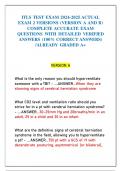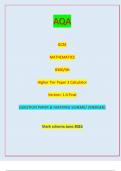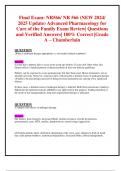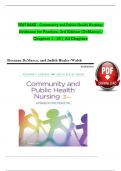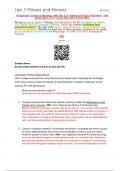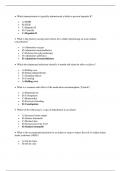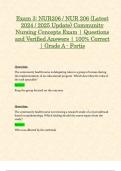Exam (elaborations)
ITLS TEST EXAM ACTUAL EXAM 2 VERSIONS (VERSION A AND B) COMPLETE ACCURATE EXAM QUESTIONS WITH DETAILED VERIFIED ANSWERS (100% CORRECT ANSWERS) /ALREADY GRADED A+
- Course
- Institution
ITLS TEST EXAM ACTUAL EXAM 2 VERSIONS (VERSION A AND B) COMPLETE ACCURATE EXAM QUESTIONS WITH DETAILED VERIFIED ANSWERS (100% CORRECT ANSWERS) /ALREADY GRADED A+
[Show more]
